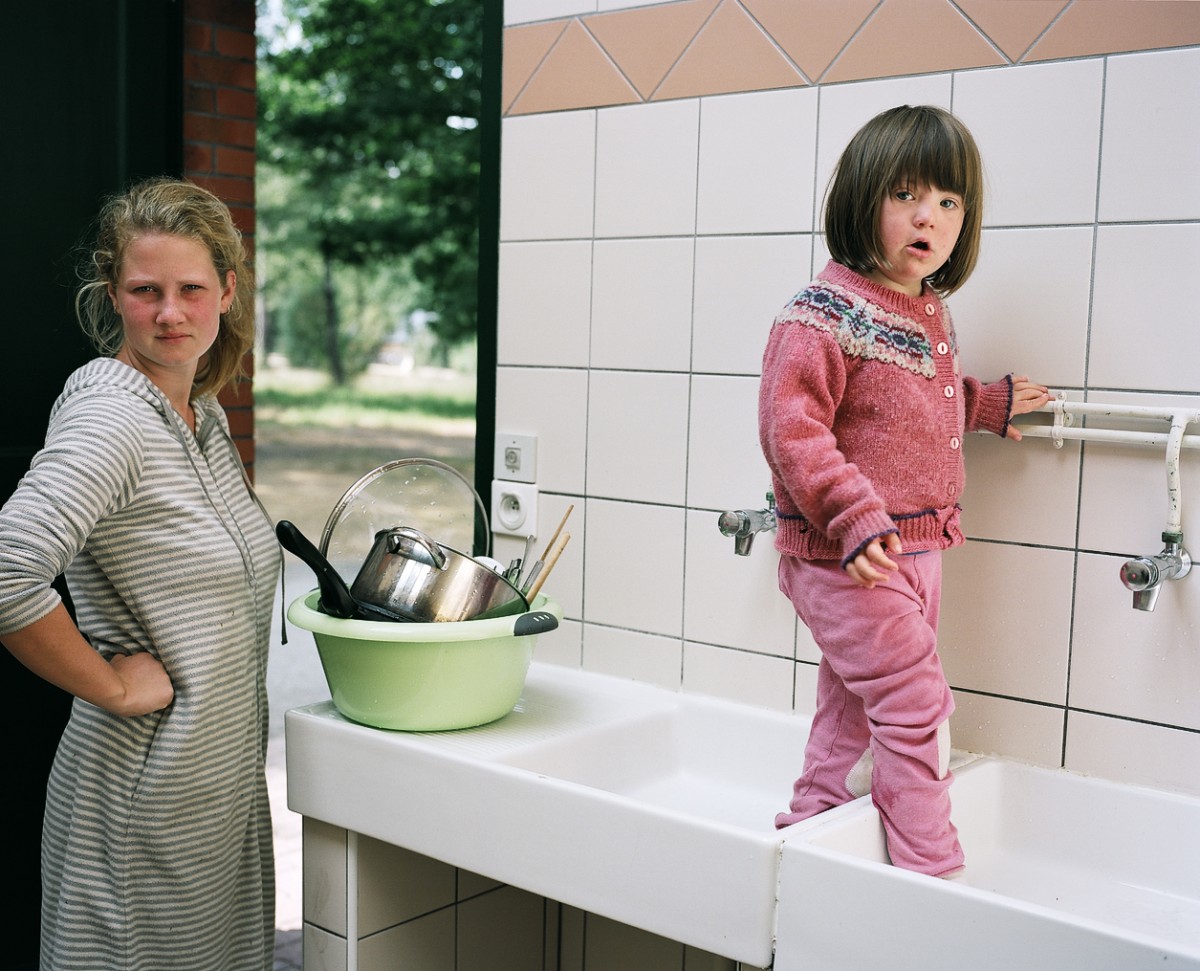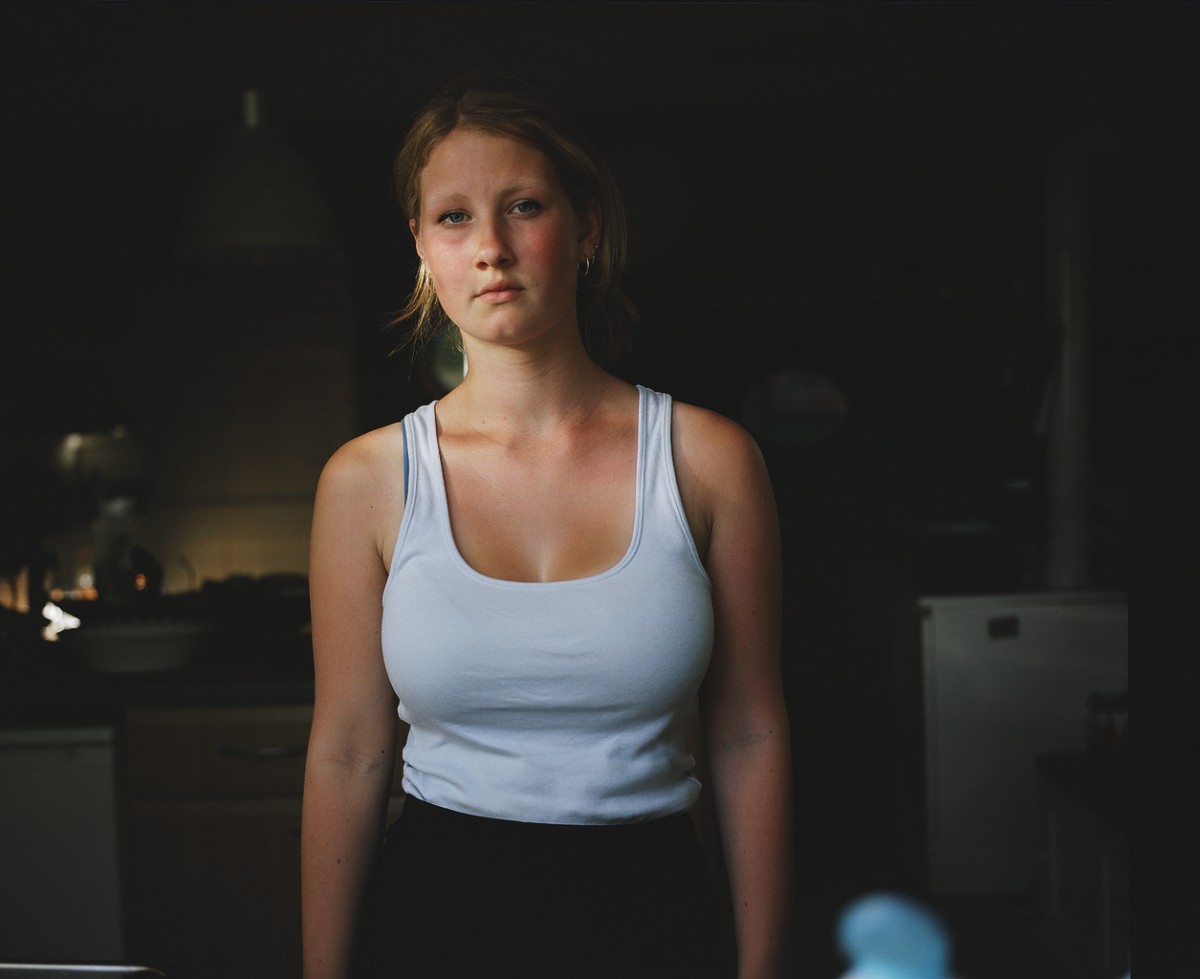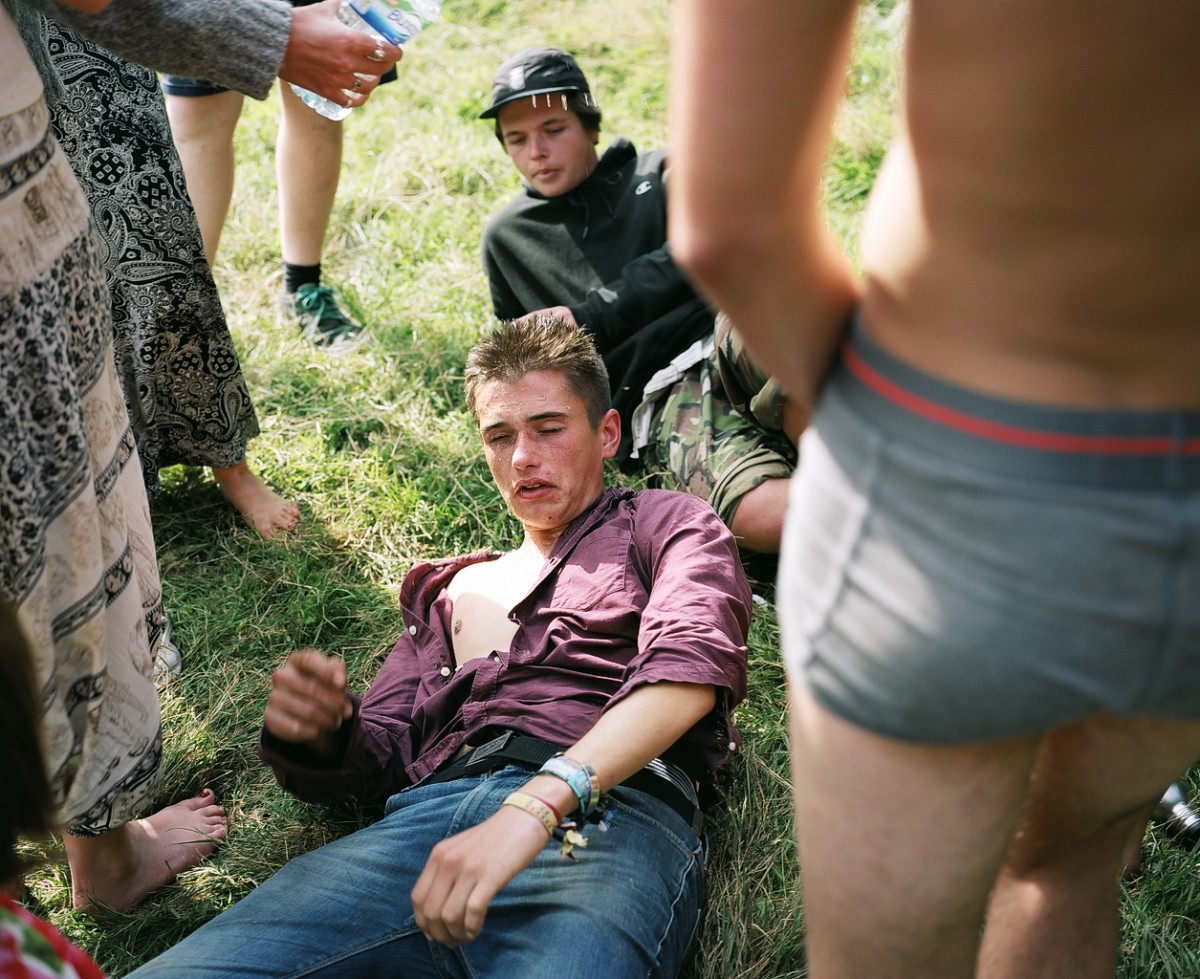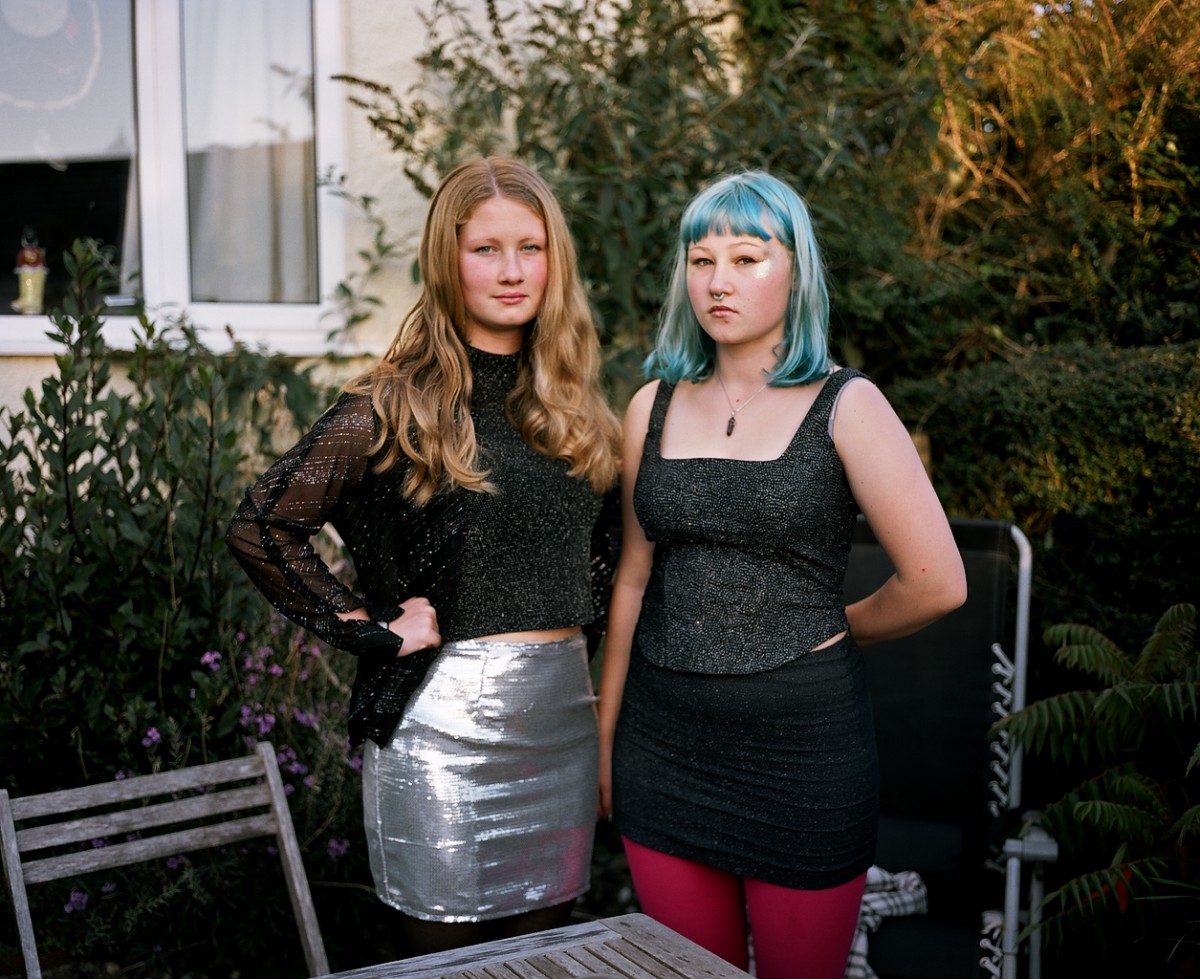Photographer Sian Davey’s work is an exploration of the psychological, social and political landscapes of both herself and those around her.
Trolley Books recently published Sian’s first book Looking for Alice, a project exploring her relationship with her daughter Alice. We caught up with her to talk parenthood, anxiety and adolescence.
PW: You mention anxiety and uncertainty in your description of Looking for Alice and use photography as a tool to understand your relationship with your daughter, Alice. How did your background in psychotherapy inform this project?
SD: Uncertainty creates anxiety and fear, which always affects our relationships adversely, receiving my new daughter’s diagnosis (Downs Syndrome) it was fear of the unknown that was difficult and it was this that affected my earliest connection with her. My background as a psychotherapist gave me a sharp sense of responsibility to address the situation with my new baby and fundamentally informs the way I work photographically. Whilst working on the Alice series I certainly developed a stronger understanding of the more intimate aspects of the process.

PW: A seeming point of interest in your ongoing work is adolescence. Can you discuss how you approach this and what questions you aim to explore?
SD: Firstly, as a mother I’m interested in the relational aspects of adolescence. I’m also fascinated with this developmental stage when a child starts to individuate and separate from their parents. There is this particular point in time when you have child and adult in the same body, which is why it’s such a complex and potentially confusing time. During this period of transition, there is a very short and specific ‘window’ when a person can behave in a way, which is free of the weight of societal expectations and norms. Before long the window closes and we can forget how it felt to be ‘untethered’.

My new series with my teenage step-daughter, Martha, is essentially about our relationship and from the onset it was clear this was a collaboration. On reflection, it was not just the act of taking the photographs and being alongside her, but also the process of post-production and editing where I stumbled across more of the unconscious material in the post-production work. For example, I start to notice what I am choosing to reveal about my relationship with my daughter – the process always reveals aspects of our relationship which I was previously unable to recognise.

I recently gave a talk about my work with Martha and there was a moment when she looked back at me – this huge image on the huge cinema screen. I felt a sudden and deeper recognition of ‘us’, our journey together and how we reached this place and realised just what this project was really about.

Photographing adolescence is sensitive territory, with access being the primary concern, particularly as a parent. Central to any work involving people is building relationships, even if only momentarily. The project with Martha has been carried out over the last 2 years and has inevitably included her friends. Initially, there were no real issues around consent or the need for a more personal acceptance of me and my camera. But quite soon there was an almost tangible transition – my daughter started to move from childhood to becoming a young woman and was also literally shifting in terms of time spent at home versus time spent in the spaces she occupies with her friends, away from home.
It was in this transition that I experienced the most challenges especially in terms of ‘negotiating’ and retaining permission to photograph Martha and her developing friendships.
The process had this quality of me cultivating the skill of oscillating between invisibility and visibility, letting my intuition guide me in judging when it was ok to be there or not. It was important that I got a handle on the groups’ boundaries and that I didn’t overstep them – not withstanding the fact that these boundaries were often unspoken.

Fortunately, Martha and I formed a good working relationship very early on in the project – discussing and ironing out any arising issues as we went along. Now, after a year or so I feel I have gained the trust from her friends.
I felt this strongly a couple of weeks ago when arriving outside a club to photograph the teenagers at 5am, as arranged. While loading up my film in the car, I suddenly hear a bang and look up to see all these teenagers, like monkeys at the safari park, clambering all over my car. They were genuinely excited to see me (hopefully not just for the lift home!).
PW: Can you talk more about how photography and psychotherapy informs your photography?
SD: My natural and continuing curiosity about what makes people tick became very clear quite early on in my life as I was continually trying to understand how people organize themselves in the world.
So, I suppose there was an inevitability that I would enter the field of psychology – I’m very interested in people. I gained so much from my 15 years of practice, including an understanding of the complexities of people’s boundaries and where and how to place myself in relation to them. I cultivated a strong degree of receptivity, being able to sense and harness what is going on in both the subject and myself, in any moment. This is a critical part of being a working therapist, but also directly transferable to my work in photography. I am fascinated by the more subtle aspects of this – the deeper material, the unconscious aspects of self, which are not so easily revealed. Psychotherapy is a profoundly intimate process, as is portrait photography – both are essentially a dance between subject and object.

Additionally, I have learnt that we are all essentially the same. We just employ different tools to mask our vulnerability. Beyond that, there is an overwhelming need for connection and intimacy. The greater ease I now have with myself helps me to put others at ease when I’m working. In a sense, my work is to enable them (the subject) to be seen – without me getting in the way so that I can capture who they are, not just who they think I want them to be.

PW:Is there an element of the personal and the private in Looking for Alice in the sense of how we come to terms with personal information and then present it to the wider world?
SD: Yes, it’s a very personal story – about my daughter, myself and my entire family. It was my choice to present it in public in this way. Looking for Alice is actually Alice’s story as much as mine. It is also a political piece and part of my decision was made from thinking how best to honestly and powerfully communicate the issues, which arose for me as a photographer and a mother, as well as society’s relationship to ‘difference’, both historic and current.
But under all this, it was an inter-subjective process between Alice and I. Intuitively, I feel that Alice needed me to communicate her story and was guiding me toward the themes that need to be understood.


For more of Sian’s work, click here.
For other Ideas Series interviews, click here.









